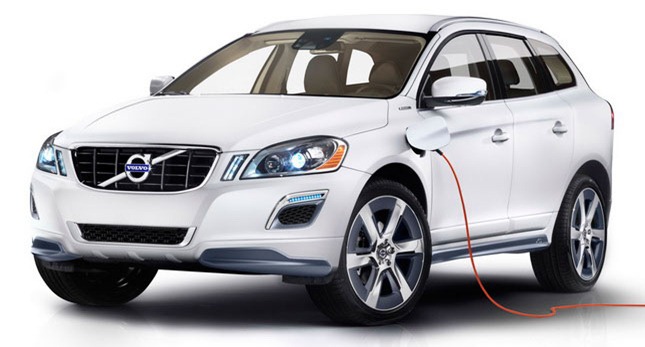
Last month, Volvo launched the production version model based on the V60, which will go on sale in limited numbers this November in certain European countries.
Today, the Swedish car manufacturer announced that it would soon be adding another plug-in hybrid in its range, this time based on the XC60 crossover featuring a gasoline (instead of a diesel internal combustion engine like the V60 PHEV).
Although officially it's still a concept, Volvo makes no attempt to hide the fact that in reality it is a forerunner of the production version which will follow and, by its own admission, is aimed squarely at the U.S. market.
“The gasoline plug-in hybrid is ideal for the American motorist who wants an electric car while at the same time retaining all the power and capacity that comes in his or her present vehicle”, said Volvo’s President and CEO Stephen Jacoby.
The XC60 Plug-in Hybrid Concept features a turbocharged four-cylinder gasoline engine up front, with an output of 280HP and 380 Nm (280 lb-ft) of torque that’s driving the front wheels through a new eight-speed automatic transmission.
Like the V60 PHEV, its rear wheels are driven by a 70HP electric motor powered by an 11.2 kWh lithium-ion power and the driver can select all-wheel drive at the push of a button. The system's combined output is 350HP enough to accelerate the car from 0-100 km/h (0-60 mph) in just 5.8 seconds when the “Power” mode is selected.
The hybrid XC60 can be propelled solely by the electric motor for about 45 kilometers (28 miles) with zero emissions when the “Pure” mode is selected.
The default “Hybrid” mode provides an average consumption of just 2.3 lt/100 km (102.2 mpg US), a maximum range of up to 960 km (600 miles) while emitting just 53 g/km of CO2.
The hybrid XC60 bears a “T8” designation in order to demonstrate that its performance is comparable to that of a conventional eight-cylinder engine.
“It’s time to stop counting cylinders”, says Peter Mertens, Volvo’s senior vice president at the R&D department. “Four-cylinder engines are the most effective way to quickly reduce CO2 emissions and fuel consumption without compromising customer expectations when it comes to driving pleasure and performance.”


























0 comments:
Post a Comment